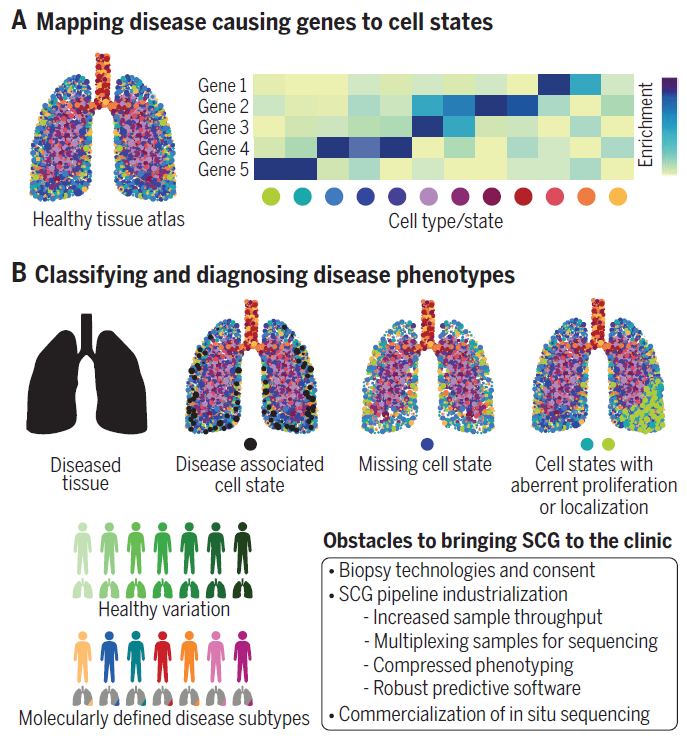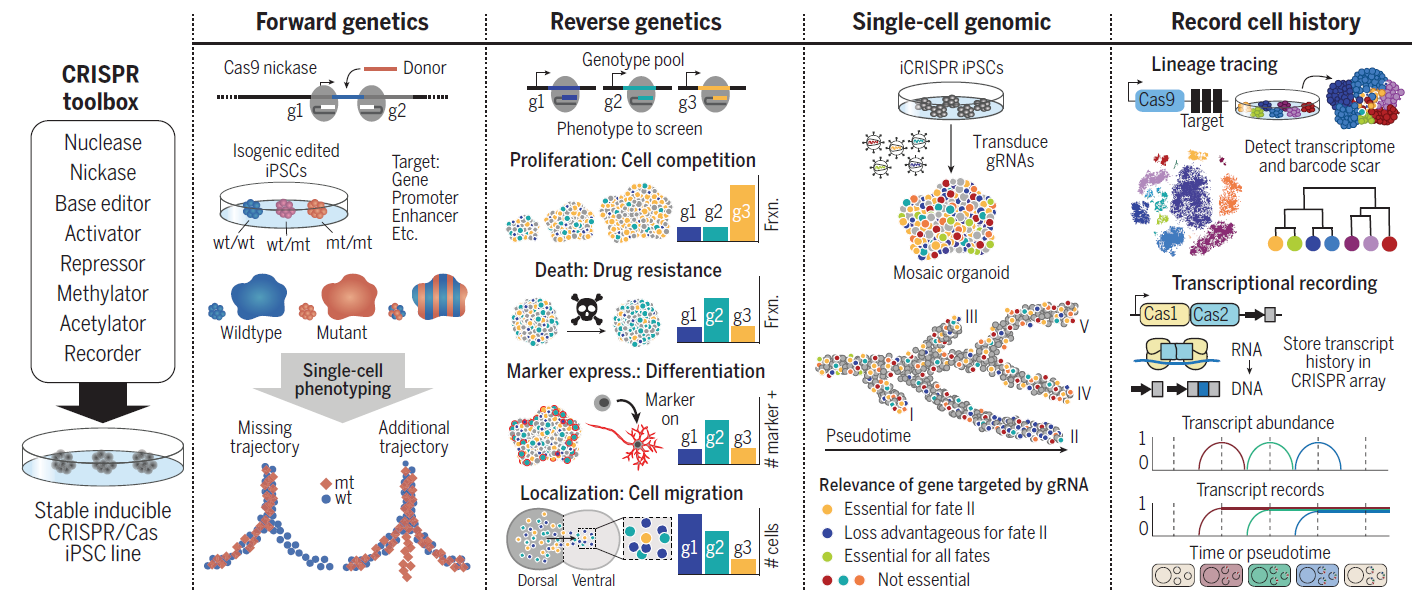2020-01-11 by Quick Biology Inc.
In life science, single cell resolution at molecular level is growing in popularity. A recent paper in Science Journal reviewed recent advances into how single cell genomics is being used to develop personalized phenotyping strategies that cross subcellular, cellular, and tissue scales to link our genome to our cumulative cellular phenotypes. By single cell strategy, we not only catalog our human cell types, but we can also track how a cell develops, differentiate (Fig.1). By analyzing how cell types vary between individuals, how they fail in disease, researchers can map disease phenotypes to cell phenotypes (Fig.2). Together with advances in genome editing tool kit (CRISPR system developed by Feng Zhang and Jennifer Doudna, Prime Editor developed by David Liu) and Stem cell biology, there are so many promising therapeutic applications in human organoids (Fig.3).
Figure 1: Human phenotyping in the single-cell genomics era. (A) Many different single-cell genomic methods have been developed to profile cell heterogeneity in human organs across space and time. (B and C) These measurements can be integrated to build phenotypic maps that cross subcellular, cellular, and tissue and system scales.

Figure 2: Human organ maps can resolve disease phenotypes. (A) Single cell resolved human organ phenotypic maps can be used to identify cell states that are likely most affected by human disease by determining which cells express disease-causing or disease-associated genes. (B) In the future, diseases can be grouped into molecularly defined subclasses on the basis of single-cell genomic (SCG) phenotyping. Many obstacles remain for bringing SCG phenotyping directly to patients in a clinical setting.

Figure 3: Genetic manipulation toolkit to link phenotype to genotype by using stem cells. A diverse array of genetic manipulation tools based on the CRISPR-Cas system can be deployed in organoids to test predictions from single-cell genomic surveys of organs and organoids and link genotype to phenotype. Shown are examples of potential CRISPR-Cas toolkit applications in human organoids.

Quick Biology is an expert in NGS and genomic tools in personalized medicine. Find More at Quick Biology.
Ref:
1. Camp, J. G., Platt, R., & Treutlein, B. (2019). “Mapping human cell phenotypes to genotypes with single-cell genomics”, 1405(September), 1401–1405.
